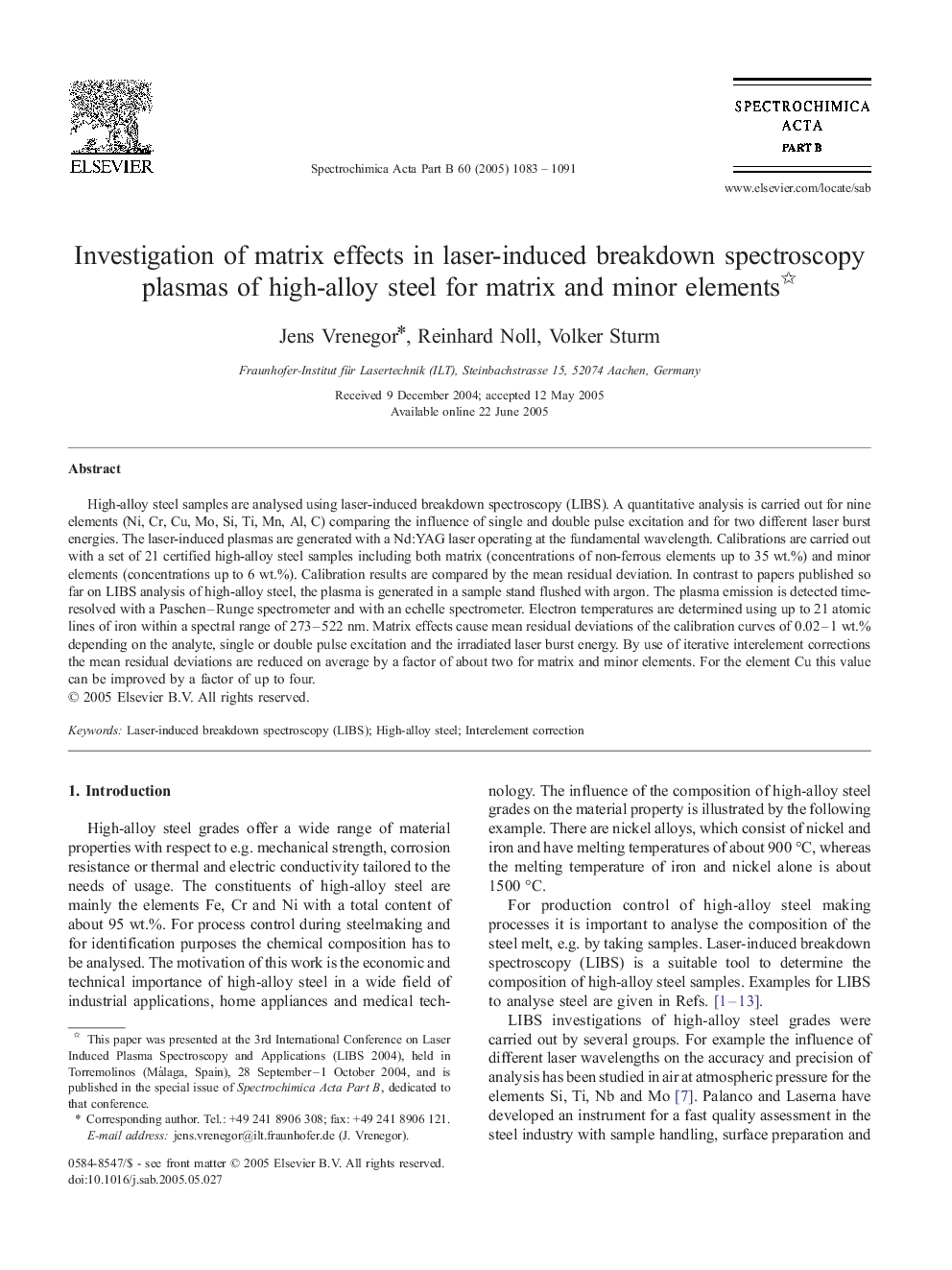| Article ID | Journal | Published Year | Pages | File Type |
|---|---|---|---|---|
| 9757248 | Spectrochimica Acta Part B: Atomic Spectroscopy | 2005 | 9 Pages |
Abstract
High-alloy steel samples are analysed using laser-induced breakdown spectroscopy (LIBS). A quantitative analysis is carried out for nine elements (Ni, Cr, Cu, Mo, Si, Ti, Mn, Al, C) comparing the influence of single and double pulse excitation and for two different laser burst energies. The laser-induced plasmas are generated with a Nd:YAG laser operating at the fundamental wavelength. Calibrations are carried out with a set of 21 certified high-alloy steel samples including both matrix (concentrations of non-ferrous elements up to 35 wt.%) and minor elements (concentrations up to 6 wt.%). Calibration results are compared by the mean residual deviation. In contrast to papers published so far on LIBS analysis of high-alloy steel, the plasma is generated in a sample stand flushed with argon. The plasma emission is detected time-resolved with a Paschen-Runge spectrometer and with an echelle spectrometer. Electron temperatures are determined using up to 21 atomic lines of iron within a spectral range of 273-522 nm. Matrix effects cause mean residual deviations of the calibration curves of 0.02-1 wt.% depending on the analyte, single or double pulse excitation and the irradiated laser burst energy. By use of iterative interelement corrections the mean residual deviations are reduced on average by a factor of about two for matrix and minor elements. For the element Cu this value can be improved by a factor of up to four.
Related Topics
Physical Sciences and Engineering
Chemistry
Analytical Chemistry
Authors
Jens Vrenegor, Reinhard Noll, Volker Sturm,
